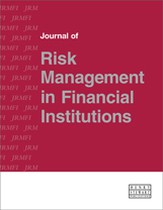Interconnectedness and financial stability
Abstract
The 2007–2008 global financial crisis has been associated with a high level of connectivity in the global financial system. The crisis, and the following events of the past decade, have highlighted the relevance of the concept of interconnectedness to understanding systemic risk, transmission of financial contagion and ultimately on the subject of financial stability. Nevertheless, the more general relationship, across its full spectrum, between interconnectedness and financial stability, is still not fully studied and understood. This paper reviews the positive aspects as well as the negative aspects of interconnectedness. It also discusses briefly the important question of the optimal level of connectivity in a financial system. Finally, the paper proposes the use of novel statistical inferential methods for complex networks to address comprehensively the study of interconnectedness in financial systems.
The full article is available to subscribers to the journal.
Author's Biography
Serafin Martinez-Jaramillo is a senior financial researcher at the Financial Stability General Directorate at Banco de México and he is currently an adviser at the CEMLA. His research interests include financial stability, systemic risk, financial networks, bankruptcy prediction, genetic programming, multiplex networks and machine learning. Serafin has published book chapters, encyclopedia entries and papers in several journals, such as the IEEE Transactions on Evolutionary Computation, Journal of Financial Stability, Neurocomputing, Journal of Economic Dynamics and Control, Computational Management Science, Journal of Network Theory in Finance and others. Additionally, he has co-edited two books and two special issues for the Journal of Financial Stability. Serafin holds a PhD in computational finance from the University of Essex, UK and he is member of the editorial board of the Journal of Financial Stability and the Journal of Network Theory in Finance.
Christian U. Carmona is a doctoral candidate reading statistics at the University of Oxford. His research interests are mainly concentrated in applied probabilistic modelling, Bayesian inference and the study of relational data. Before Oxford, he finished a master’s degree in statistics at UC Berkeley, and worked for the Central Bank of Mexico building quantitative tools for financial risk management.
Dror Y. Kenett is a multidisciplinary financial economist, an expert on financial networks, financial stability and systemic risk. He is internationally renowned for his expertise on network-based models, financial contagion and correlation-based models. He has published more than 40 papers in financial, physics and engineering journals, such as the Journal of Banking and Finance, Journal of Risk and Financial Management, Quantitative Finance, Nature Physics and Scientific Reports. He has a PhD in physics from Tel-Aviv University, Israel.
Citation
Martinez-Jaramillo, Serafin, Carmona, Christian U. and Kenett, Dror Y. (2019, March 1). Interconnectedness and financial stability. In the Journal of Risk Management in Financial Institutions, Volume 12, Issue 2. https://doi.org/10.69554/OTBZ2655.Publications LLP
